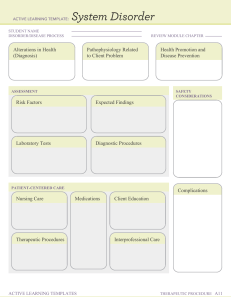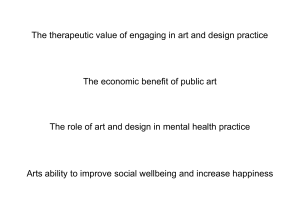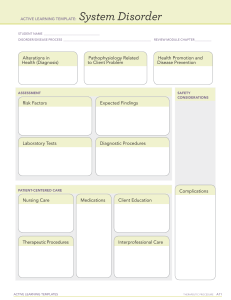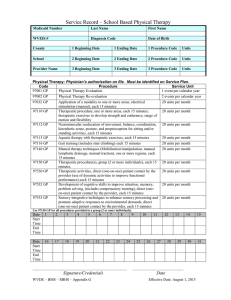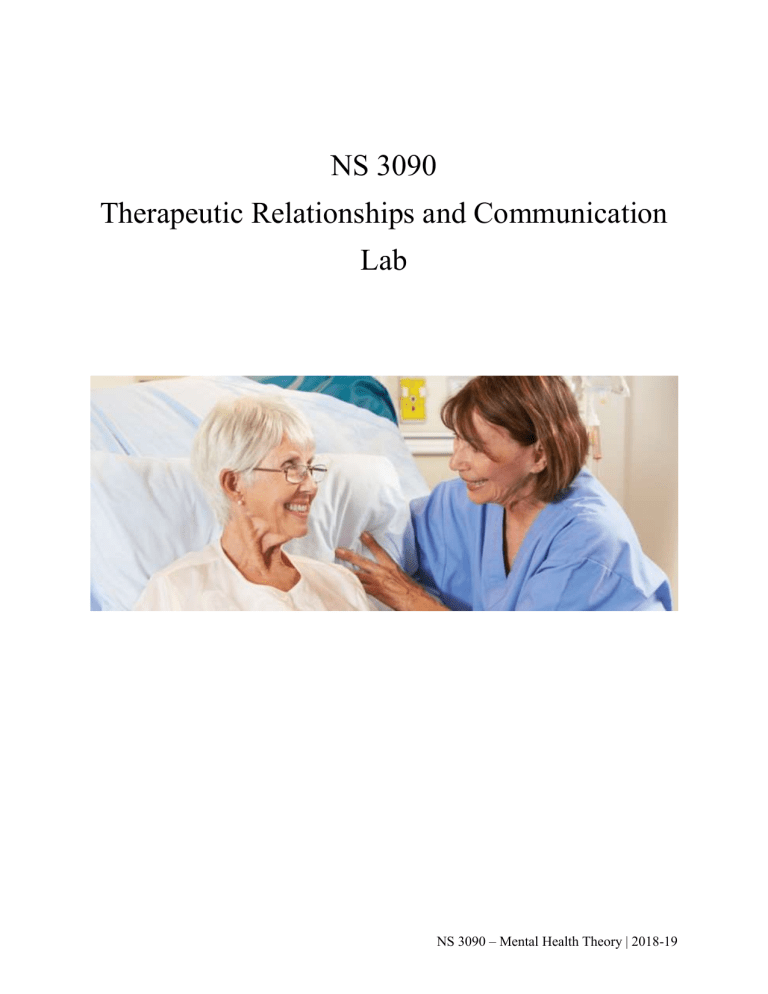
NS 3090 Therapeutic Relationships and Communication Lab NS 3090 – Mental Health Theory | 2018-19 Page |2 PURPOSE To provide students with the knowledge and skills required to incorporate the concepts of therapeutic relationships and communication to entry-level nursing practice. LEARNING OUTCOMES Students will achieve the following: Identify the importance of self-awareness in nursing practice. Develop a repertoire of verbal and non-verbal communication skills. Develop a process for selecting effective communication techniques. Implement effective therapeutic communication skills. Explain how the nurse can establish a therapeutic relationship with clients by using rapport and empathy. Discuss the significance of defense mechanisms. Identify the definition, purpose and theories that inform the nurse-client therapeutic relationship. Recognize and understand different phases of the therapeutic and non-therapeutic relationship. Explain what occurs in each of the three phases of the nurse-client relationship: orientation, working, and resolution. Discuss reasons why nurses need to become informed about the health care beliefs and behaviors of diverse cultures. Implement communication techniques to improve the care of clients from diverse cultures. PRE-READINGS Chapter 6 – Communication and Therapeutic Relationship in: Austin, W., & Boyd, M.A. (2019). Psychiatric and mental health nursing for Canadian practice. (3rd ed.). Philadelphia, PA: Lippincott Williams & Wilkins. Chapter 4 – Understanding Each Other: Communication and Culture Balzer-Riley, J. (2017). Communications in nursing (8th ed.). St. Louis, MI: Mosby Elsevier. CRITICAL THINKING QUESTIONS 1. What is the difference between passive listening and active listening? 2. How can you establish a therapeutic relationship with clients by using rapport and empathy? 3. How would you know that you have established a therapeutic relationship? NS 3090 | Therapeutic Relationships and Communication Page |3 4. Why is it necessary for you to be informed about the health beliefs and behaviors of diverse cultures? Therapeutic Relationships A “therapeutic relationship” is a relationship that occurs between a client and the nurse that is goal-directed and works towards advancing the best interest and outcomes for the client (RNAO, 2006b). Establishing therapeutic relationships recognizes that effective nursing care is dependent on the nurse coming to know his or her client and engaging in a relationship that supports recovery. Key qualities of a therapeutic relationship include active listening, trust, respect, genuineness, empathy, and responding to client concerns (RNAO, 2006b). The phases of a therapeutic relationship include orientation, working and resolution. Nurses must also be prepared to experience a series of non-therapeutic phases, which include orientation, grappling and struggling and mutual withdrawal. Respecting boundaries that define the limits of the professional role is also important in a therapeutic relationship (RNAO, 2006b). Establishing and maintaining a sense of self-awareness allows a nurse to assess when counter transference and transference – inappropriate meanings and feelings that are assigned to the client and vice versa – has taken place, and to assess his or her own ability to address client dynamics (RNAO, 2006b). Therapeutic relationships are of critical importance to nursing practice and help promote awareness and growth to work through difficulties (RNAO (2010b). Therapeutic relationships were originally highlighted in psychiatric nursing literature (RNAO, 2010b) before being recognized as fundamental to all nursing (Orlando, 1961; Peplau, 1952; Sundeen, Stuart, Rankin, & Cohen, 1989) and focus on the value associated of developing therapeutic relationships (Brown, 2012). Establishing therapeutic relationships works in tandem with person-centered-care principles that reflect the belief of getting to know the whole person. Caring for the ‘whole person’ entails coming to know the person with respect to all components – biological, psychological, emotional, physical, personal, social, environmental, and spiritual – and treating the person holistically rather than treating only their illness or disease (Lovering, 2012; Morgan & Yoder, 2012). According to the Registered Nurses’ of Ontario’s (RNAO) Best Practice Guideline Person – and Family – Centered Care (2015), “When optimized, health-care partnerships can improve the autonomy of individuals to make decisions related to their health care and can increase their satisfaction with care” (p. 21). Reference Registered Nurses’ Association of Ontario. (2017). RNOA Nurse Educator Mental Health and Addiction Resource. Toronto, ON: Registered Nurses’ of Ontario. NS 3090 | Therapeutic Relationships and Communication
